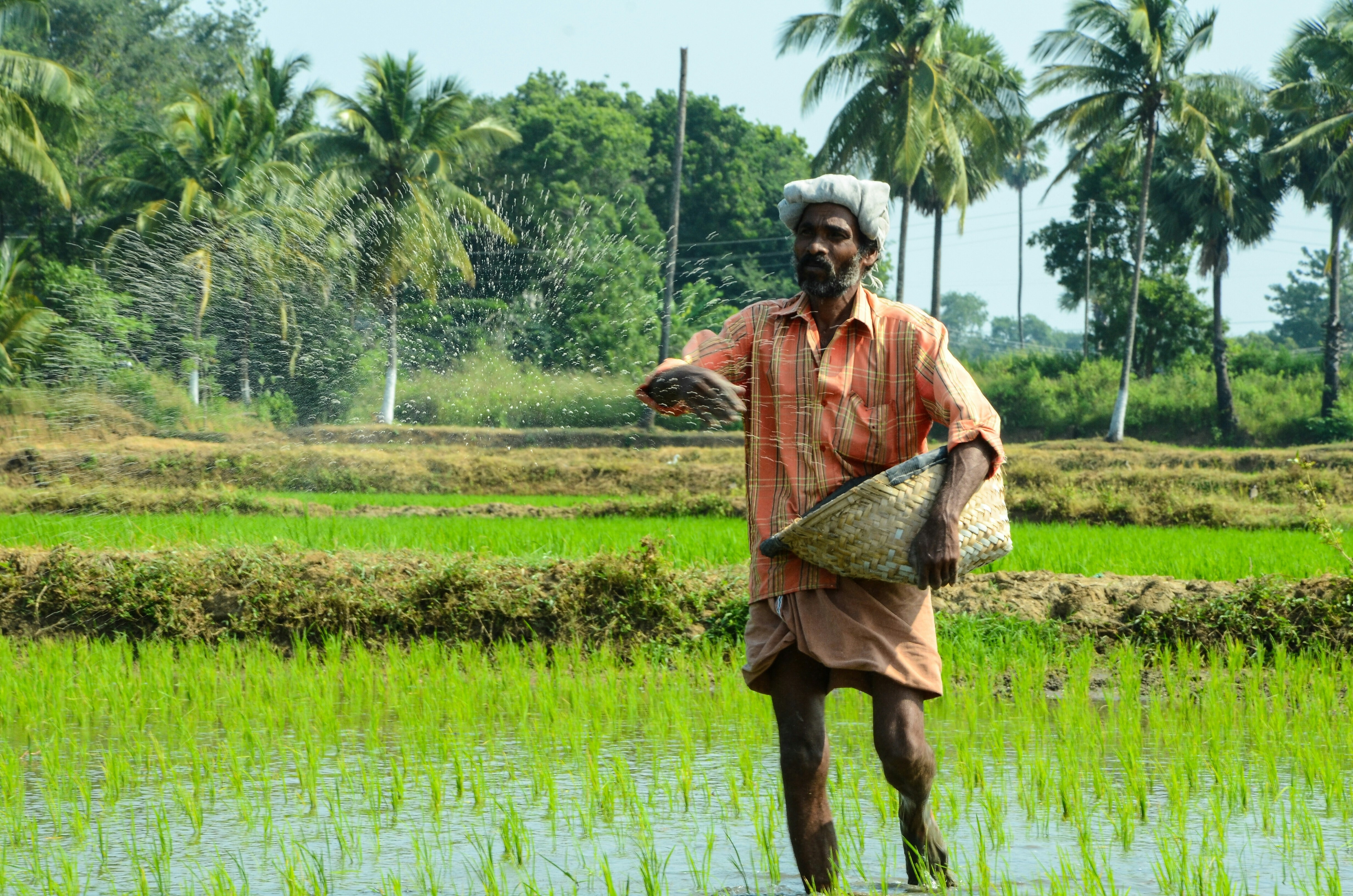UN outlines how states can protect children from climate change - here's why that matters
Children are disproportionately affected by climate change because they are more vulnerable to its impacts.
Image: Pexels/Jørgen Larsen
Noam Peleg
Senior Lecturer, Faculty of Law and Justice; Associate, The Australian Human Rights Institute, UNSW SydneyStay up to date:
SDG 13: Climate Action
- The UN Committee on the Rights of the Child has detailed how governments can protect children's rights in the face of climate change.
- Their statement says that climate change is a 'child rights crisis' and that governments have a legal obligation to take action.
- But the real test will be in implementation.
Climate change is not just an environmental crisis, it’s a human rights crisis. And the humans to be most affected by climate catastrophe are the youngest ones: children.
We have seen children directly impacted in the Northern Hemisphere’s unprecedented heatwaves this year. In Greece, 1,200 children were evacuated when a wildfire threatened their holiday camps.
In the United States, children were swept away by floodwaters in Kentucky after torrential rain, while an extreme heatwave swamped the West Coast. In Australia, this summer is expected to be hot, dry and dangerous but that’s nothing compared to what is to come.
So what are the responsibilities of governments to reduce the harm climate change will wreak on the lives of children?
What’s the World Economic Forum doing about climate change?
A statement from the United Nations (UN) released today seeks to clarify this. It clearly stipulates why and how the rights of children are compromised by climate change – including the very basic right to life. It also details the steps necessary to mitigate this catastrophe.
A practical guide to help children
The statement comes from a UN body of 18 experts that monitors how national governments are implementing the UN Convention on the Rights of the Child. This is an international agreement on a broad range of human rights as they relate to children, including their health, education, development, best interests and living standards.
From time to time, UN human rights committees publish a new interpretation of the treaty they oversee. These are known as “general comments”.
General comments are significant because they provide authoritative guidance to the governments of the 196 countries that have ratified the convention, with Australia being one of them. They also provide a globally agreed standard against which governments and businesses can be assessed.
This new comment follows nearly two years of consultation with more than 7,000 children from 103 countries, as well as governments and relevant experts.
It’s not merely an aspirational statement. Rather, it’s a practical “how-to” guide to action. This document will help children, young people and their advocates hold governments and others accountable for their decisions.
So what does the document say?
The general comment says governments have obligations to respect, protect and fulfil children’s rights. It states the “adverse effects of climate change” on the enjoyment of children’s rights “give rise to obligations of states to take actions to protect against those effects”. It adds the committee overseeing the convention aims to:
i) Emphasise the urgent need to address the adverse effects of environmental harm and climate change on children;
ii) Promote a holistic understanding of children’s rights as they apply to environmental protection;
iii) Clarify the obligations of States parties to the Convention and provide authoritative guidance on legislative, administrative and other appropriate measures to be undertaken with respect to environmental issues, with a special focus on climate change.
The general comment also identifies children as agents in their own lives. By extension, this means children have a right to participate in the drafting of environmental policies or laws that will affect them.
Here are the committee’s points that are most relevant to Australia.
1. Best interests of the child
A key principle of the treaty is the best interests of the child should be a primary consideration when making decisions on their behalf. These decisions include laws, regulations, budgets and international agreements. The general comment expands on this, saying:
the best interests of the child shall be a primary consideration in the adoption and implementation of environmental decisions affecting children.
”It says this process should take into account “the specific circumstances that make children uniquely vulnerable in the environmental context”.
This “best interests” approach stands in stark contrast to that taken by the full bench of the Federal Court in Australia. In 2022, the court accepted the federal government’s argument that it has no duty of care for children, and that the best interests principle is not something it ought to consider when making decisions about the environment.
2. Protecting Indigenous children
Indigenous children and their communities are particularly vulnerable to climate change.
For example, a recent study found Indigenous communities in New South Wales were disproportionately exposed to a range of climate extremes such as heat, drought and flooding. They also experienced higher rates of climate-sensitive health conditions and socioeconomic disadvantages.
The comment says states are obliged to ensure the right to life, survival and development of Indigenous children. They are also expected to “engage with Indigenous children and their families in responding to climate change by integrating, as appropriate, Indigenous cultures and knowledge in mitigation and adaptation measures”.
In Australia, it means the state, territory and federal governments have the duty to listen to Indigenous communities – especially to their younger members – and to take their perspective into account when crafting any policy or law that might have an impact on their livelihood and culture.
Have you read?
How is climate change affecting our social connections?
How we can end the alienation of developing nations when it comes to climate policies
Cancelled races, fainting players: How climate change affects sports
Climate change is accelerating the global food crisis, we must act now to protect the most vulnerable
3. Actions of the business sector
The general comment says governments should require businesses to conduct “due diligence” to assess how their current and future actions might affect the climate and the rights of children.
Where the impacts of a business cross national boundaries, governments are expected to ensure businesses operate at “environmental standards aimed at protecting children’s rights from climate-related harm”.
The comment also expects governments to encourage investment in and use of zero-carbon technologies, particularly when the assets are publicly owned or funded. Governments should also protect the rights of children when implementing tax regimes and procuring goods and services from the private sector.
Facing up to the challenge
The general comment makes it clear states should no longer ignore the impacts of the climate crisis on children and future generations because they have legal duties to rectify it.
The UN committee articulates the responsibilities of states and details how children’s rights should be protected by all levels of government. Despite the fact the Convention on the Rights of the Child was adopted decades before environmental rights became a topic of discussion, the new general comment is a good reference for everyone from on-the-ground, grassroots local advocacy groups to international non-government organisations and UN organisations like UNICEF.
In this bold new statement, the committee has pushed the interpretation of the convention almost to the maximum, and like other international treaties, the real test will be in its implementation.
Don't miss any update on this topic
Create a free account and access your personalized content collection with our latest publications and analyses.
License and Republishing
World Economic Forum articles may be republished in accordance with the Creative Commons Attribution-NonCommercial-NoDerivatives 4.0 International Public License, and in accordance with our Terms of Use.
The views expressed in this article are those of the author alone and not the World Economic Forum.
Related topics:
Forum Stories newsletter
Bringing you weekly curated insights and analysis on the global issues that matter.
More on Climate Action and Waste Reduction See all
Planet in focus: The technologies helping restore balance – and other news to watch in frontier tech
Jeremy Jurgens
November 13, 2025
Min HU
November 13, 2025
Alejandra Castro, Cassio Ferreira, Ana Gonzalez Pelaez and Nathanial Matthews
November 11, 2025
Sha Song, Wee Kean Fong and Laia Barbarà
November 11, 2025




